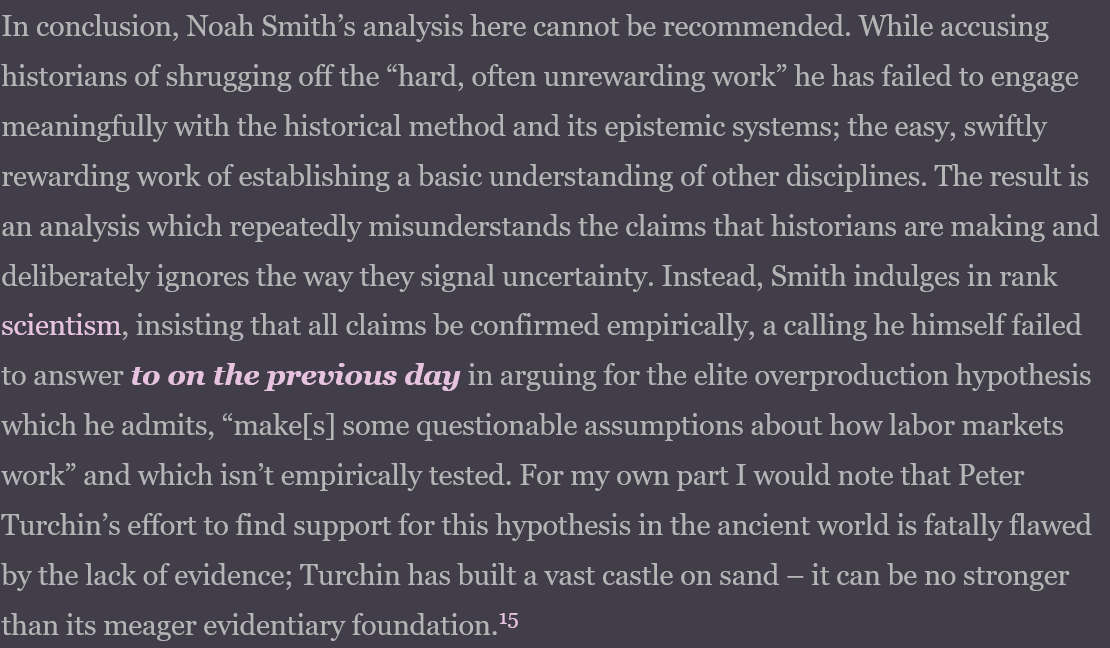
Cliodynamics, Social and Cultural Evolution. Blog: https://t.co/nvizaYg3ma New book: https://t.co/3Z8iALsIv4
4 subscribers
How to get URL link on X (Twitter) App


 @BretDevereaux @Noahpinion ... the present. With a huge emphasis on the contemporary America (from the 1970s on). Perhaps America in the late 20 century is an ancient country? The main source is Ages of Discord
@BretDevereaux @Noahpinion ... the present. With a huge emphasis on the contemporary America (from the 1970s on). Perhaps America in the late 20 century is an ancient country? The main source is Ages of Discord
https://twitter.com/Noahpinion/status/1562966527820804096.@Noahpinion First, I disagree with the (apparent) criticism that my definition of elite overproduction focuses only on the supply -- it is explicitly the issue of balance of supply/demand. In #AgesOfDiscord I always consider both sides of the equation.
https://twitter.com/WFlyte/status/13107705821584793613. 100 k people burn 200 k ha, so we have 2 ha burned per person.

 Spain is at the turning point, but how successful is the intervention is still in balance.
Spain is at the turning point, but how successful is the intervention is still in balance.




https://twitter.com/LottyBrand/status/1172294332872843264Their Twitter responses were far from scholarly, to say the least. Wengrow then banned me on Twitter. I am told that he periodically says nasty things about me behind my back. I, of course, can’t respond. Quite pathetic. Not that I am particularly interested in responding.


https://twitter.com/PBS/status/988855094446829569They filmed in me in Mexico City last June. It takes a long time to produce these series! But well worth the wait.
